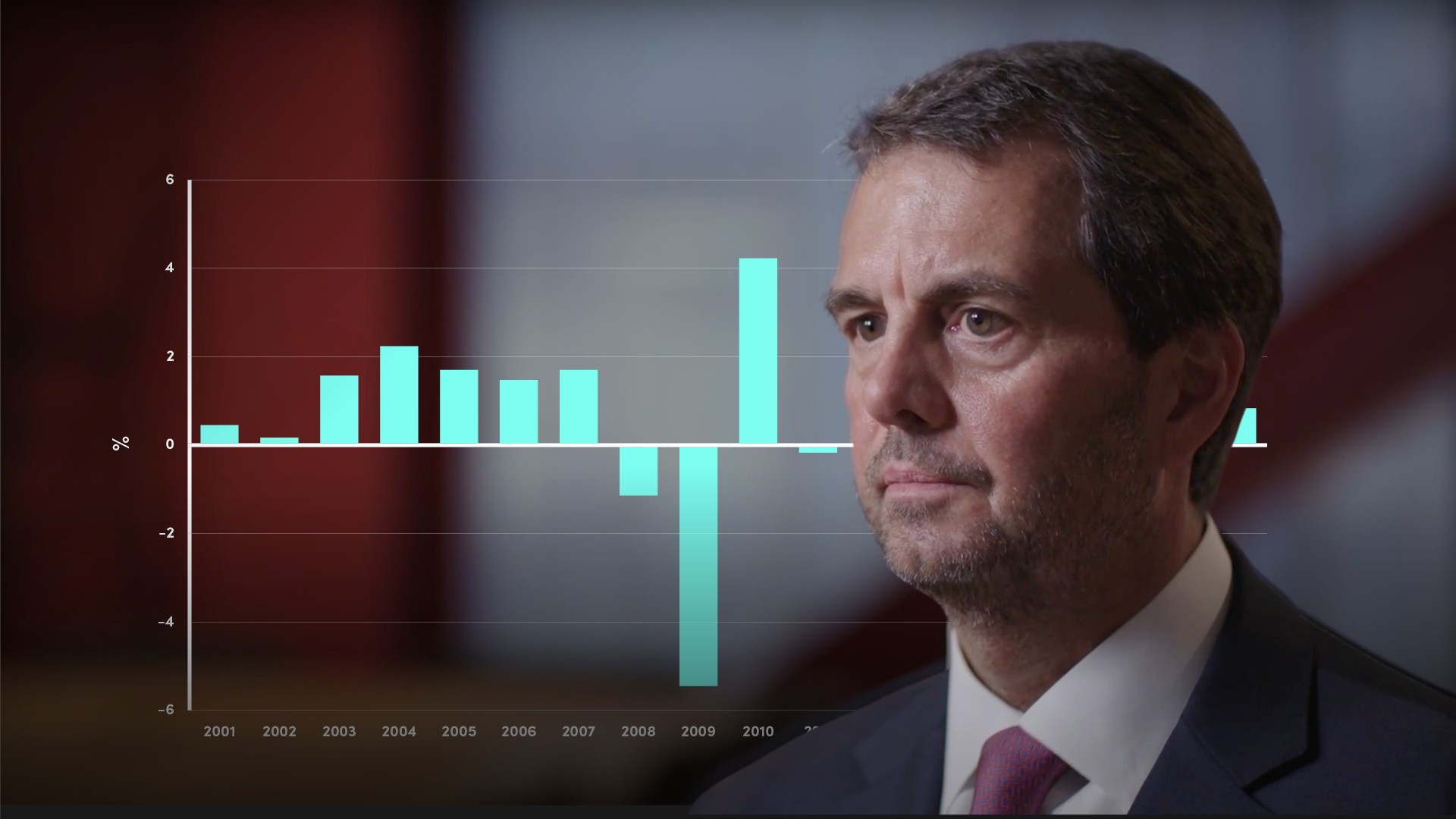
Quantitative Easing in the UK

Tim Hall
30 years: Debt capital markets
In this video, Tim outlines the United Kingdom government’s response in the initial phase of the Great Recession and explains how the UK led the way in terms of addressing issues with its “too big to fail” banks.
In this video, Tim outlines the United Kingdom government’s response in the initial phase of the Great Recession and explains how the UK led the way in terms of addressing issues with its “too big to fail” banks.
Subscribe to watch
Access this and all of the content on our platform by signing up for a 7-day free trial.

Quantitative Easing in the UK
5 mins 12 secs
Key learning objectives:
Identify the UK’s initial policy responses to the financial crisis
Outline the three QE programmes introduced by the UK
Outline the success of the QE programmes
Overview:
The Bank of England’s collective monetary and fiscal policies, plus measures to restore confidence in the UK banking system, helped the UK economy recover from its severe downturn in 2009, and return to growth.
Subscribe to watch
Access this and all of the content on our platform by signing up for a 7-day free trial.
How did the UK initially respond to the crisis using conventional monetary policy?
- The Bank of England reduced the interbank borrowing rate six times in six months, from 5% in October 2008 to 0.5% in March 2009, the lowest level since 1694, when it was established.
- The UK government established a bank bail-out scheme in October 2008, totalling £500 billion to purchase bad loans, and if needed, to recapitalise the largest banks in the UK
How did the UK respond to the BREXIT decision?
- Following the decision to leave the EU, the Bank of England decreased the bank borrowing rate from 0.5% to 0.25% and announced a new round of QE as preventative measures to help the UK economy from falling into recession
- The BOE reacted to slightly above-target inflation of 2% by raising rates for the first time in 10 years to 0.5% in Nov2017, and then to 0.75% in Aug2018. Hence, so far, during the post-referendum period, the UK has managed to avoid a recession
What did the first round of QE (QE1) consist of?
- The first round was announced in March 2009
- Involved the purchase of Gilts, and the amount was increased four times during the course of 2009, ultimately reaching £200 billion
- The first round of QE officially ended in January 2010
What did the second round of QE (QE2) consist of?
- The second round was announced in October 2011
- The aim was to combat higher inflation, fears of a double-dip recession and the growing collateral effects from the Eurozone peripheral sovereign crisis
- This round of QE totalled £175 billion
- Focused on additional purchases of mainly Gilts in two phases that took place through November 2012
What did the third round of QE (QE3) consist of?
- Third round began in August 2016
- The aim was to combat fears of a recession following the surprise referendum result in June 2016 in favour of the UK leaving the EU
- This round of QE totalled £60 billion of Gilts and £10 billion of corporate bonds
- This was coupled with steps to support banks in the low-interest rate environment
What was the overall impact of the three programmes of QE?
- At the end of September 2019, the Bank Of England’s balance sheet stood at £587 billion
- GDP increased from its low of £1.5 trillion in recession-hit 2009 to £2.1 trillion in 2018.
- Annual inflation was 1.7% in August 2019
- Unemployment in the UK was 3.8% for the quarter ended July 2019
Subscribe to watch
Access this and all of the content on our platform by signing up for a 7-day free trial.

Tim Hall
There are no available Videos from "Tim Hall"



























